Tools
There are 250 posts filed in Tools (this is page 16 of 25).
Libre Arts: Weekly-ish recap — 28 February 2022
Rust GameDev: This Month in Rust GameDev #30 – January 2022
Libre Arts: Weekly-ish recap — 7 February 2021
Libre Arts: Introducing Watchtower
Libre Arts: Weekly-ish recap — 26 January 2021
Highlights: new releases of Scribus, Flameshot, Surge, ZynAddSubFX, Zrythm, Giada; Audacity resurrects real-time effects, Ardour gets cue markers.
Flameshot 11.0
This application for taking and editing screenshots has creeped into my life on its many tiny legs and nested there. So I’m happy to say a new version is now available.
The most interesting changes are:
- More CLI options, if that’s the way you roll.
- Thickness of tools can now be set with the keyboard. Simply type a numerical value like “15” and you will see the indicator in the upper left corner of the screen.
- Text alignment can now be set in the side bar.
Scribus 1.5.8
There are pretty much no fancy new features in the new Scribus release. Almost all changes are minor improvements, fixes, and internal cleanup. The only new feature is being able to apply table and cell styles from the style manager and better undo/redo coverage for editing tables.
Inkscape UI updates
Martin Owens added a ‘split non-intersecting path’ feature and moved all toolbox buttons into categorized flow boxes. So now you can resize the toolbox and get a Krita-like multi-column setup. Here is my recent video that starts with this feature:
Parth Pant appears to be sticking with the project after successful participation at Google Summer of Code last year (he’s the same person who implemented alignment snapping aka smart guides). He recently patched Inkscape to show all possible drop zones when dragging a dockable window.
Mike Kowalski redesigned the part of the documents settings dialog where you set up the page. This is now way cleaner and easier to use.

As usual, there’s interesting ongoing work. Martin Owens is resurrecting the updated export dialog from last year’s Google Summer of Code program. His patch adds support for multiple pages exporting. Here’s a video:
PBS has been working on a patch that improves performance when panning and zooming. The results are rather impressive as you can see in a video posted in that merge request. However there are some regressions, so more work is required.
Blender Geometry Sketcher
This Blender add-on by hlorus for 2D drafting with constraints (using SolveSpace’s solver library) has been gaining attention in the past few weeks. It’s also rather actively developed. There’s all sorts of improvements:
- new constraint (ratio),
- better UX/UI (elements highlighting on hover to select and delete etc.),
- an initial entity and constraint browser in the sidebar.
- …and more
FreeCAD Arch/BIM report
Yorik van Havre posted an update on everything going on in his domain at FreeCAD which is architecture and BIM. If this is something that interests you, do check it out. Here are the highlights:
- The Axis object can now be used to make section marks, and it’s supported by both TechDraw and DXF exporting. That makes Draft/Arch output 100% supported in DXF files and on TechDraw pages.
- Conversion utilities
dxf2dwganddwg2dxffrom the commercial version of QCAD can now be used to import and export DWG files. Both other options, proprietary ODA Converter and FOSS LibreDWG, are still (and will continue to be) available. - A new Markdown-based documentation system is now gradually replacing the old Mediawiki-based setup. For now, you have an option which one to use.
Meanwhile, Amritpal Singh released Reinforcement workbench v0.3 with two new tools: Footing Reinforcement Tool and Slab Reinforcement Tool. See here for a Patreon post.
In related news, Dimitar recently put FreeCAD through a real-life case, it and performed fairly decently:
Here is something a bit different. I have been working on a project where I thought it would be good to test the capabilities of Freecad. I know it’s great modelling, but what about documentation? @FreeCADNews @OSArchOrg pic.twitter.com/usKI8Vcqel
— Dimitar Pouchnikov (@dimitarsp) January 22, 2022
Kdenlive update
Here are some notable changes that arrived to this non-linear video editor recently:
- UX improvements for the zoombar.
- Massive speedup on project load, tested mostly on NFS.
- Kdenlive will now show loading progress in the status bar when many clips are added to the project.
- Better support for clips with variable frame rate (interestingly, the same has been going on in Blender’s VSE lately).
- Monitor zooming got a bunch of improvements such as more zoom level steps and more convenient centering of the view when zooming in.
- Kdenlive now also ships a few LUT files by default, including one for the infamous teal-orange color grading.
Olive update
Matt published an update for the work done throughout most of 2021. The post on Patreon is locked to subscribers, so if you aren’t one of the, here’s the gist of it:
- Most work was spent on laying better foundation for future work.
- Better node UI + node groups
- Keyframe and audio waveform optimization
- PortAudio instead of Qt Multimedia
- Node “table” to overview input/output for nodes
- Channel selection coming soon
- Stability is now top priority
Most recently, Matt improved the ripple delete feature (it got confused by long audio files in the node tree) and implemented deleting tracks and deleting all empty tracks (right-click on track header to access either). He also added audio device selection (without settings for now).
In fact, @itsmattkc has just upgraded this all the way to ‘Delete all empty tracks’ 🙂 https://t.co/tzQYr4yyer pic.twitter.com/DbhfjBIZ7z
— Libre Arts (@lgworld) January 24, 2022
Current work in the progress:
- Better UX/UI for markers (caption visible on the ruler, renaming, and more)
- Bezier curves as part of the polygon node
- More nodes (some are landing to the main repository this week already)
There’s more exciting stuff going on but it’s mostly coming from first-time contributors, so I’m just being cautious here.
Surge XT 1.0.0
Paul Bacon et al. have finally released JUCE-based version of the Surge synth now called Surge XT.
Porting to JUCE resulted in numerous changes and improvements like providing a standalone version and supporting screen readers for visually impaired users. The entire plugin layer and all UI components had to be completely rewritten, but you still get a few familiar skins in this release, and there will be more soon enough, I’m sure.

There are more changes than that, of course. Here’s a short version:
- New patch navigation system, with built-in search and marking patches as favorite.
- A crapton of modulation improvements, including a new Modulation List overlay and a formula modulator based on LuaJIT.
- Lots and lots of new keyboard shortcuts.
- Lots of microtuning improvements, including improved tuning interface from Tuning Workbench Synth.
- Several new effects: Spring Reverb, as well as Mackity, MackEQ and Chamber (all three from Airwindows).
- Patch sets from 12 more musicians.
I’m surprised they say they don’t distribute an LV2 plugin because, in fact, they do (it’s inside the deb package), and it’s the only way to run Surge at any zoom level below 175% in Ardour — the VST3 version refuses to go lower than that.
For a full list of changes please see here.
The team is already working hard on v1.1.0.
ZynAddSubFX 3.0.6
This is the first new release of the softsynth in almost since 3 years.
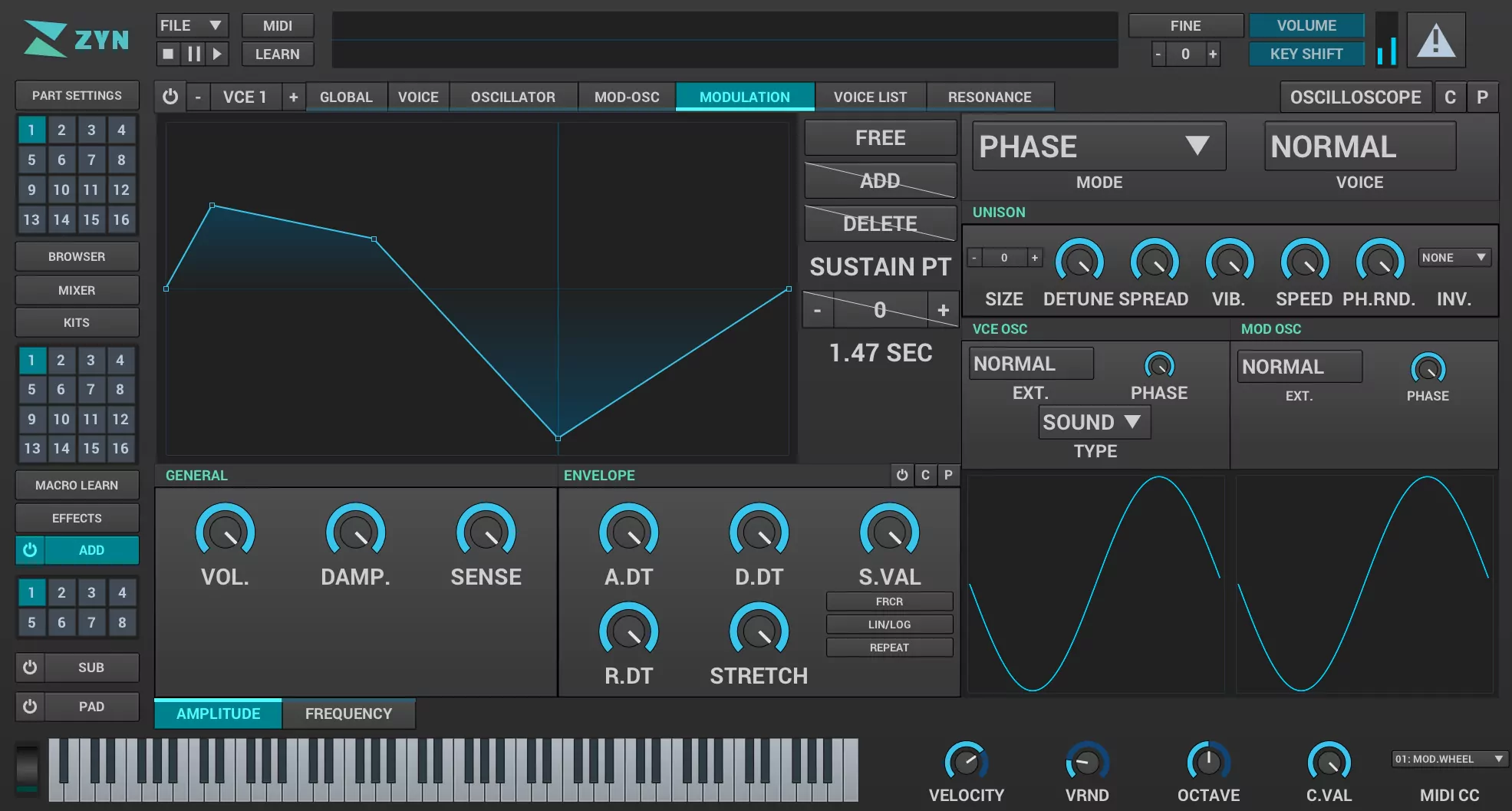
Here are the most important changes:
- Enhanced watchpoint system for waveform views (GSoC 2019 project)
- New antialias mode to add synth oscillator interpolation
- 14-bit NRPN support for automation
- New Tanh, Cubic, and Square distortions with additional shaping
parameters - New ‘smoothing’ filter parameter
- New LFO features: fade in, optional ‘LPF’ filter
- Add repeatable envelopes
- New filters: Moog ladder, comb
- BPM sync
- Latched key mode
- Re-enabled classic MIDI learn
Both classic Zyn and newer Zyn-Fusion source code is available for downloading, Zyn-Fusion binaries are, as usual, paid-for.
Giada 0.20
The free/libre loop machine is back with a new release. Some of the changes are:
- Show progress bar for long operations
- Improved rendering algorithm for sample channels
- Always display playhead in Action Editor
Zrythm 1.0.0-alpha.28.1.x
Alexandros clearly follows the ‘release early, release often’ principle, so three new alpha releases have been out since the beginning of the year. Highlights:
- GTK4 + libadwaita port
- Hardware-accelerated timeline
- DSP optimizations
- Searchable preferences dialog
- Fader and panner UI updated
- Optimized MIDI events processing
- Audition mode
- Adaptive snapping
Ardour goes for cue markers
Most changes recently are related to clip launching one way or another. All three major contributors including Ben Loftis from Harrison are involved with this.
If I was to pick just one change, it would be cue markers. Basically you can now place a cue marker anywhere on the timeline’s ruler to toggle playback of an entire scene from the Cue page (formerly Trigger). And thus we are one tiny step closer to having Elise Trouw for Ardour brand ambassador 🙂
Audacity resurrects real-time effects
The most exciting thing going on with Audacity right now is the resurrection of real-time effects code originally written by former team member Leland Lucius. That code is currently undergoing major rewrite by Paul Licameli. The first patchset landed to the public git repo last week, the second is sitting in the review queue, and there will be more (a lot more, likely).
Please note that while you can download a CI build for your OS, you should not expect there to be any user interface for real-time effects just yet. Right now, it’s all under-the-hood work. But it looks like this feature is expected to be available in v3.2.0. Which means this year.
Tutorials
Unfa turns an epic sneeze into a nose trumpet instrument for a jazz song. Tools involved: Ardour, x42 Instrument Tuner, Autotalent, sfizz sampler. Scroll to 1:48:50 for the action 🙂
Quick and easy to follow tutorial on making Earth a little saturny using GIMP:
Here is a fun Krita tutorial by Denis Godyna on painting a fantasy landscape with flying rocks:
Artworks
Green Hills by Philipp Urlich, Krita
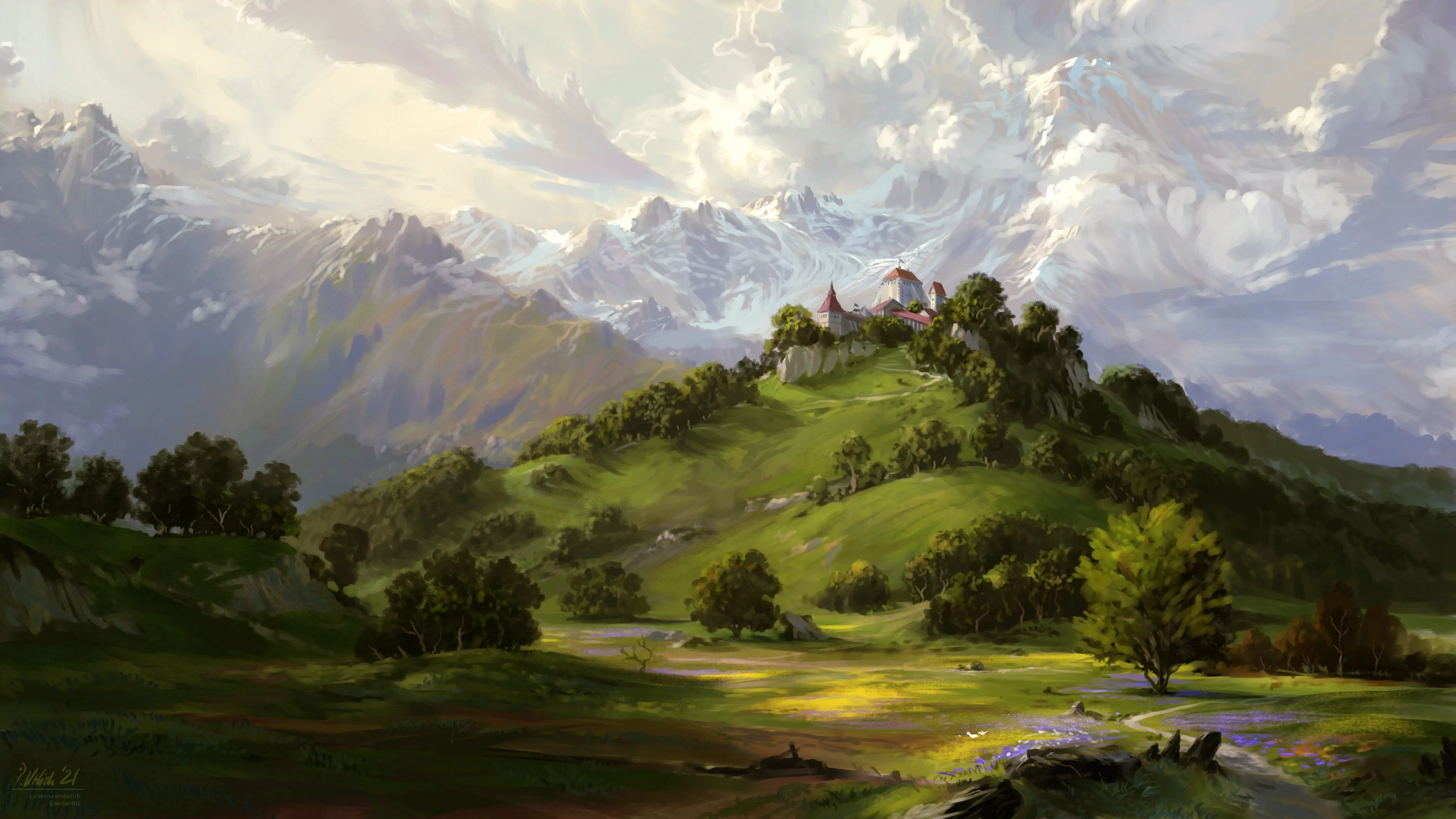
Snowy City, by Nevena Jevtic, Krita (also used as the featured image for the post):
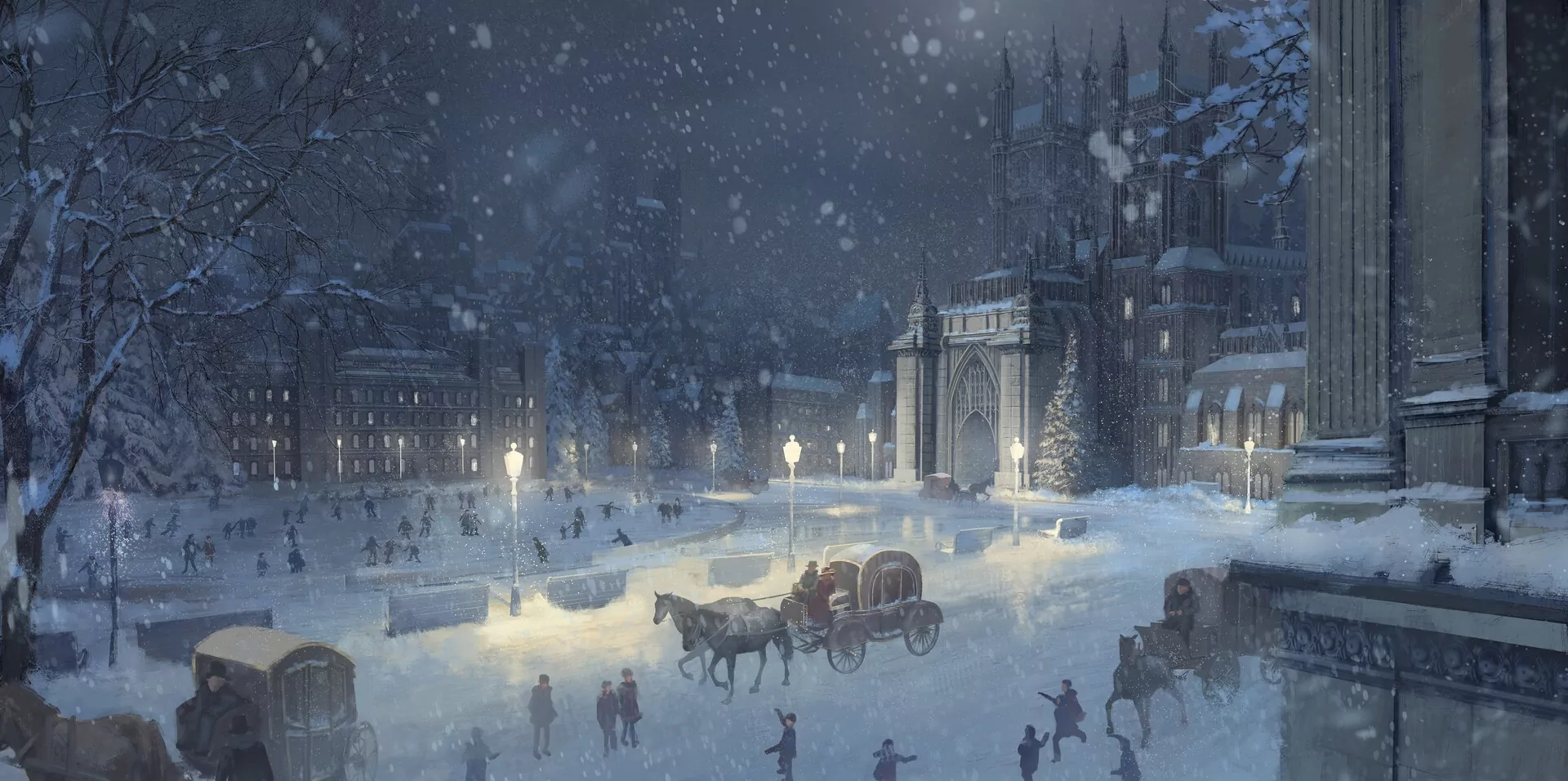
Firefly forest, by BlackCat Productions, Blender
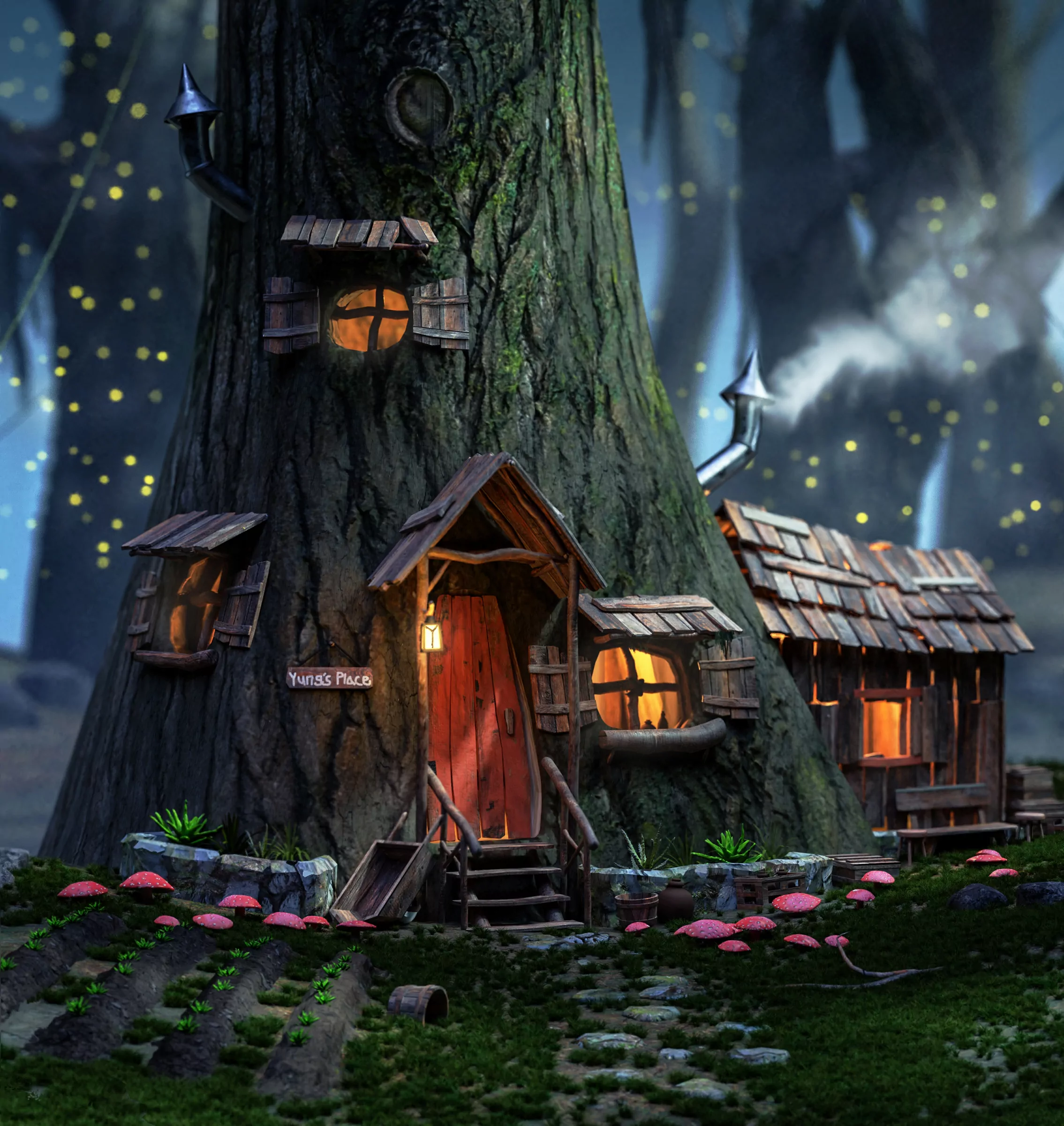
Animation made (or, rather, remade) with Blender:
以前制作したアニメーション作品をリメイクしました^^
YouTubeで旧バージョンとの比較も合わせて公開しました
この作品は明日から行われる昭和百年展にて展示予定です#blender #3DCG #昭和百年展https://t.co/XsHXaBeYln pic.twitter.com/QzWkE36qH8— ふじたりあん (@noveldrum) January 20, 2022
Rust GameDev: This Month in Rust GameDev #29 – December 2021
Libre Arts: Streamlining Inkscape for the masses
Libre Arts: Looking back at 2021, looking forward at 2022
Let’s have a closer look at main events of 2021 and what’s coming for us in 2022. Obligatory disclaimer: I only talk about projects that I track more or less closely. There are many more great projects out there, and I’d love to hear your thoughts about those!
What’s holding up GIMP 3.0
There has been a lot of plumbing work on GIMP in 2021. Really, a lot of changes are bug fixes and boring under-the-hood work. Two major user-visible improvements are both recent:
- You can now use clone tools on multiple layers at the same time. Works great when you have a texture for a photogrammetry project and you need to “heal” it on multiple layers at the same time. The idea was suggested by the Creative Shrimp team who use GIMP in their new photogrammetry course.
- Layers dock was revamped to remove the concept of linking now that multi-layers selection is possible.
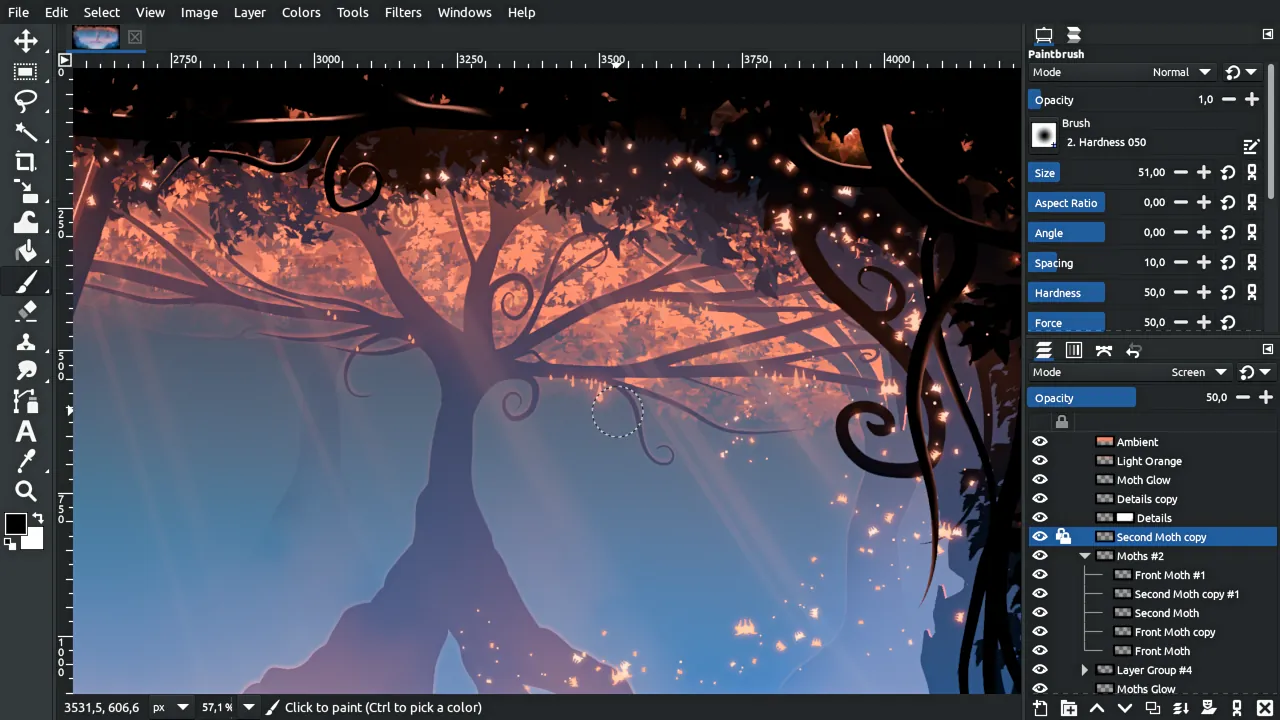
GIMP 2.99.x, artwork by Sevenix
At this point, I can’t say if v3.0 will be ready and out in 2022. There are still more internal changes to do:
- GtkAction has been obsolete for a long time, all code has to be ported to GAction. It doesn’t affect users directly, it’s just internal stuff that needs to be done. At least, it looks like two developers instead of one are willing to work on this.
- Space invasion is incomplete, there’s more changes to be done before the team can truly call GIMP an AnyRGB image editor.
- Various APIs still have to be checked to see if an update is required.
It’s safe to assume that GIMP 3.0 won’t be released by May 2022, so whenever it’s out, it will be over 4 years since the release of 2.10.
I think I’ve heard every possible joke about GIMP moving to GTK3 now that GTK4 is available. The reality is that when the port started (or, rather, resumed after the initial 2010 hack), GTK4 was future, not present or past. Stepping on every landmine by porting a huge code base to an unreleased version of the toolkit would be a really bad idea. So that’s one reason why we are here.
The other reason is that, with a project like GIMP, it’s hard to do just one thing. The team is constantly bombarded with requests that are mostly doable once you have a team of 10 to 20 full-time developers, which is light years away from where GIMP is now. Which results in a lot of running around between under-the-hood work, UX fixes, featurettes, better file formats support etc. So you give everyone a little of what they want but you end up delaying an actual release because the big stuff still needs to happen.
Right now, Jehan has unmerged code for quite a lot of stuff that is actually rather cool: naive linked layers (load external SVG, edit with Inkscape, see it reload in GIMP), basics of timeline-based animation (the WIP x-sheet plugin is abandoned), a way to plug GEGL operations to file plugins (e.g. resize and sharpen a TIFF image that you export), and some other stuff. Imagine completing all that while trying to wrap up the internal part of v3.0 development.
Perhaps there’s a merit in switching to a stricter roadmap: more focus on one big change, less focus on new fun stuff. That would give the team potentially shorter release cycles. But I also realize that 1) you can’t really demand that from volunteers, and 2) someone will always be unhappy with development priorities.
Whether the GTK4 port will happen at the same time as work on non-destructive editing, remains to be seen. If that’s the way the team chooses to go, you probably should expect another long development cycle.
Pinta 2.0
Users have been longing for a simple image editor on Linux for a long time. Fortunately, after years of hiatus, Pinta developers are really active lately. So much so that they made a GTK3-based release a few months after the last GTK2-based release. Mind you, it’s been in the making for about a year.
Other changes and improvements in 2.0 are not dramatic but they make everything slightly better.
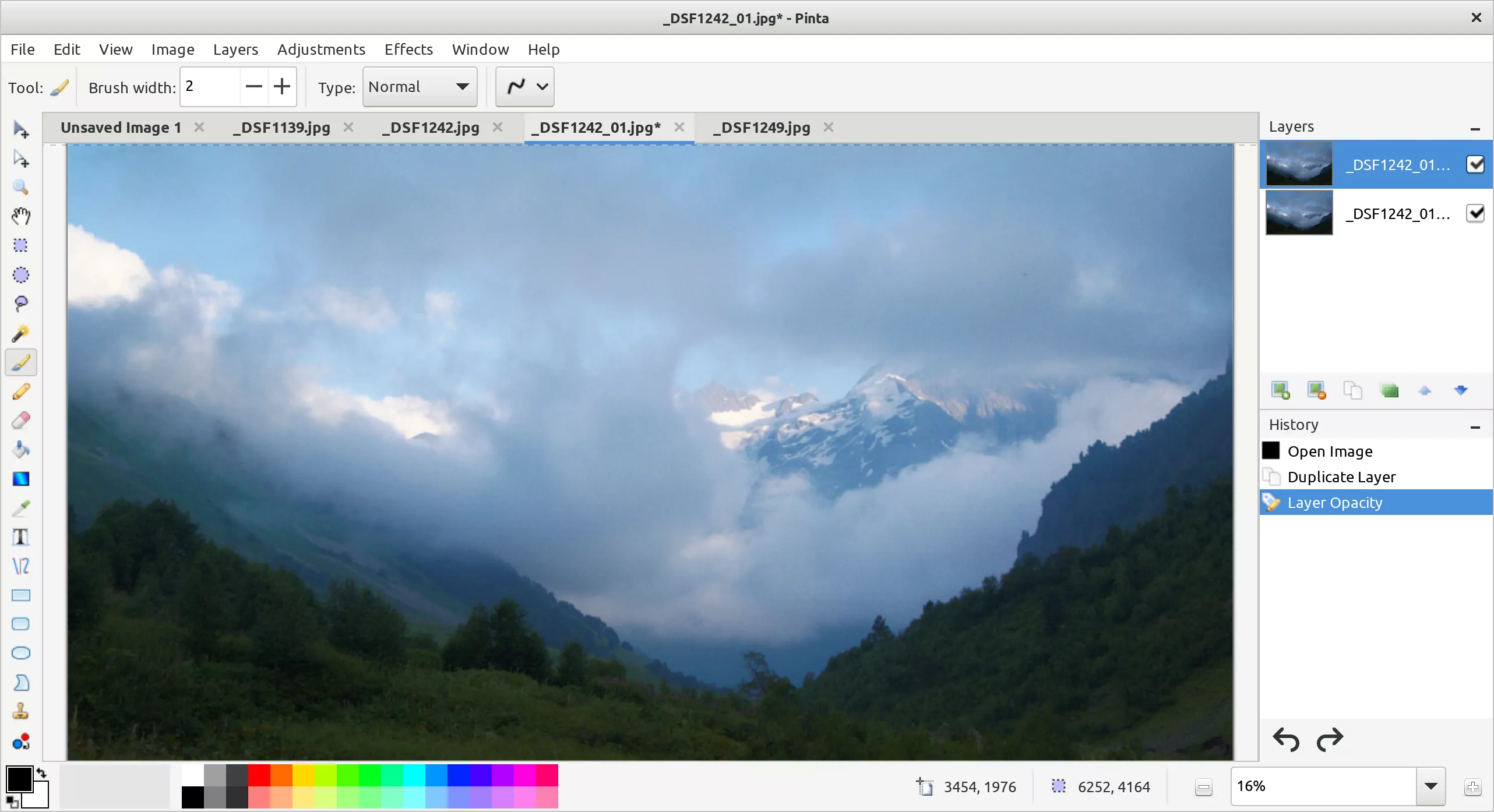
Not sure how far this project can go in terms of gaining contributors though. 84% of commits last year were done by just two programmers, and their share is rather uneven: 75% and 9%.
It doesn’t help that Mono is not a very popular framework on Linux in 2022 either. Sure, it’s still used in gaming but most desktop applications you probably remember — F-Spot, Banshee, GNOME Do, Tomboy etc. — long faded into oblivion, with just one or zero active contributors today.
So I’m interested to see if Pinta can get the acceptance that I think it deserves and become everyone’s darling after all these years. It wouldn’t be the only simple image editor for Linux (not by a long shot), but it’s definitely one of the most capable ones.
Inkscape 1.1 and upcoming 1.2
I’m sure most people reading this already have Inkscape 1.1 installed, so not much point iterating over the release notes from May. The important thing is developers appear to have managed to finally take control over the release cycles. It took them just 1 year to get from v1.0 to v1.1 with an admirable amount of changes, and v1.2 is scheduled for Spring 2022, so that’s a 1 year long cycle again.
Here are some of the user-visible changes coming to v1.2:
- multiple pages support via new Pages tool;
- smart guides for alignment and distribution snapping;
- reworked Fill and Stroke dialog, with built-in gradient editor;
- Layers and Objects dialog rolled into one;
- somewhat more compact user interface;
- customizable markers and dash strokes;
- vastly better flowed text, with exclusion areas and controllable padding.
Remember that @inkscape smart guides video earlier this week? Parth Pant was, like, okay, so you want even distribution as well… 😂😂😂
Again, more polish to be done but this is actually working on a basic level. pic.twitter.com/vR5KFt5O6p
— Libre Arts (@lgworld) June 11, 2021
The current team of Inkscape developers is absolutely fantastic (it was ever so, really). I’m super pumped up about what’s coming for the project.
Krita 5.0
Right at the end of the year, the team released version 5.0 that they’ve been hacking on for so long (some of the features were WIP for 5 years). See here for complete release notes or just watch any of the videos on YT.
Krita developers published their own annual recap which I encourage you to read in its entirety (again, not gonna compete with it). Long story short: they have a lot of great ideas for future development, they just need to breathe in and out a little, sit down and do some prioritization and planning.
I’ve been watching their journey into the mysterious land of project sustainability with great interest and admiration. It’s a great example of just how much difference one or two reluctant paper pushers can do in a free/libre software project.
BeeRef’s first year
I absolutely love this tiny useful reference image viewer by Rebecca Breu. Mostly, I use it when I do a weekly review and need to line up images from the Artworks section in a particular order. So I drop a bunch of images on the canvas, then scale and move them around.
The right kind of use for it is, of course, drop e.g. location photos for digital painting or animation planning.
This is one of the most exciting little finds for me in 2021. I hope you will enjoy using it too! There have been a few unreleased features that I hope will find their way into an actual release this year, namely cropping and a list of recent files in the main window on startup.
darktable 3.6 / 3.8
Some projects took a hard hit during the pandemic but darktable mysteriously flourished. There were enough changes to constitute two large updates a year rather than one.
If I were to summarize what’s going on with the project, I’d say it’s moving towards scene-referred workflow. The inconvenient side effect of that change is that it has become pretty much impossible to get started easily coming from any other application. You need to sit down, watch a few long videos to understand how it all works. So this is not a drop-in replacement for Lightroom or C1 or what have you. It takes commitment and time.
Besides, darktable is still full of technical terminology that can be difficult to wrap one’s head around.
Having said all that, I have undying faith in the project. And I absolutely do recommend upgrading to v3.8 in the unlikely case you missed it:
- Canon CR3 support;
- ability to use external control surface like Loupedeck+;
- new diffuse or sharpen module;
- new blurs module to simulate physically-accurate lens, motion, or gaussian blur;
- a few nice spectrogram updates.
The next update, v4.0, is expected in July. It’s been just two weeks since the official beginning of the new development cycle, so there’s not much to talk about. But these things are most likely to land there:
- new highlights reconstruction method (demo here);
- color mapping between two images through exposure and color calibration modules (video here);
- tagging UX improvements (explanation here).
Hugin, libpano13, and more
On yet another personal note, the state of affairs with libre panorama-making tools gets me frustrated of sorts. New Hugin releases come out regularly every year, but the whole stack (Hugin, libpano13, enblend/enfuse et al.) looks underloved.
Technically, new Hugin and libpano13 releases made just before the new year don’t exactly have the jaw-dropping effect. I do love the patch by Florian Königstein to boost optimiser’s performance though. But I think it’s a good idea to mention them to maybe start a conversation about ways for these projects to evolve.
Hugin peaked around 2007—2011, with multiple active developers, GSoC projects etc. And then it all went downhill, with Thomas Modes now being pretty much in charge of the whole stack and not much help coming from contributors.
I don’t think there are any silver bullets here, although switching from SourceForge and Mercurial to GitHub/Gitlab and Git sounds like a no-brainer move to at least gain some visibility and simplify contribution.
Finally, there’s a new project called SkyFill that you can run over your PTO file generated by Hugin. It basically fills missing parts of clear skies at the top of a panorama. Sounds lovely, do check it out.
Siril 1.0 is coming
Watching Siril evolve has been really exciting the past few years. It’s a kind of an old project that wasn’t getting much traction for a long time, and then the current team got really active.
The #ElephantTrunk in #Cepheus constellation. 8h 40 SHO exposures with @zwoasi camera ASI1600 MM, Skywatcher Esprit 100ED and EQ6-R Pro mount guided with #ASIAIR. See full image on https://t.co/DOBTJEmiXr#astrophotography #IC1396 #astronomy #siril #astrophoto pic.twitter.com/VTC27DULSb
— Abonengo (@abonengo) June 15, 2021
Some of the changes last year were:
- new alignment algorithm that works on just 2 or 3 stars;
- astrometry annotation and object look-up;
- Pixel Math tool;
- tilt estimation;
- improved color saturation tool with background factor;
- independent normalization of each channel for color images;
- green extraction from CFA;
- CFA equalization for X-Trans.
Version 1.0 is likely to be released in January/February 2022, so yeah, you can hold your breath alright!
The team has a huge TODO list that they will need to revisit. Live stacking and stitching is certainly there.
Blender 3.0
After gaining Apple, Adobe, and Intel (and Decentraland) as corporate sponsors in 2021, Blender Foundation has just one big achievement that is still locked: Autodesk. Can Ton pull it off? Would he? I mean, at this point I probably wouldn’t even be surprised.
Naturally, the Blender 3.0 release was one of the highlights of the year.
The 3.x roadmap that the team posted two months prior to releasing v3.0 had a mix of info on both 3.0 and onwards, so it could be a bit confusing to read in 2022. Still, a good outline of what’s in the pipeline.
We are now supposed to be in Bcon2 which means no new features, only improvements and fixes are allowed. Version 3.1 is currently scheduled for early March 2022.
BlenderBIM, Homemaker, and Topologic
Who could’ve guessed that in just 3 years or so we would go from “Don’t be ridiculous, Blender is not for precise modeling” to “Meet my new BIM authoring software, it’s Blender”? Well, that’s what BlenderBIM is: an IFC authoring package although you might call it an IFC editor depending on where you coming from.
Between BlenderBIM, Sverchok, Geometry Nodes, Homemaker, Topologic, and Ladybug Tools, we are getting a pretty spectacular (if slightly overlapping) stack of tools for architects, covering both design (with Christopher Alexander’s pattern language, no less!), building metadata handling, automatic floor plans generation, environmental analysis, CFD simulations, and then some.
I can’t even begin to list all the changes made in 2021 across the stack. It’s massive. Every BlenderBIM release alone is like Christmas, and it’s every two months regular. To give you an idea, here is the latest release announcement. Much of that is thanks to Dion Moult who is also a contributor to the IfcOpenShell library by Thomas Krijnen.
For 2022, Dion is focusing on these items (in his own words):
- Stabilising and adding drawing features so that the BlenderBIM Add-on is capable for average users to do small domestic architecture projects (e.g. house-scale renovation).
- Preparing the BlenderBIM Add-on for preliminary IFC4.3 infrastructure & rail capabilities.
- The usual random developments here and there, probably with an emphasis on connecting to FM/BMS systems, the new IDS standard, and introducing the bSDD.
Bruno Postle had to learn Python to make Homemaker usable for vastly more people via Blender (original code was written in Perl, and you had to run it in console). Here is the gist of what Homemaker is in under 5 minutes:
Right now, it uses fixed rules to design a building. Probably the greatest challenge for Bruno is going to be figuring out a way to expose pattern language to users and coming up with a sensible UI for that. My head explodes when I try to think of even approaching this subject. So yeah, quite interesting to see what we end up with.
Topologic is an interesting piece of software. Basically it builds a lightweight non-manifold topology (NMT) model of architectural spaces, and the output is consistent with what e.g. energy efficiency simulation software expects. Here is a very basic introduction.
The project was born in 2016 out of necesity as Autodesk killed off NMT features when merging Designscript with Dynamo. It is being developed by a team from Cardiff University and UCL led by Dr. Wassim Jabi and Prof. Robert Aish.
Topologic has a multilayer architecture. There’s underlying libraries doing all the heavy lifting and then there’s plugins for end-user software, including Blender where it integrates into Sverchok but can also use general Blender geometry through a converter node.
I’ve spoken to the team about their further plans. For 2022, their biggest challenges are:
- rule-based conversion from topologic to IFC and other BIM platforms;
- integrating material passports for blockchain-based workflows;
- further integration with energy and structural analysis software like OpenStudio and EnergyPlus, plus ladybug integration;
- further development of graph-based workflows including graph machine learning for classification and auto-generation of design patterns.
The most beautiful part of all this is that BlenderBIM, Homemaker, and Topologic developers all talk to each other and their add-ons play nicely with each other. In fact, Homemaker uses Topologic as an underlying engine and writes to BlenderBIM, while Topologic pretty much uses Homemaker as a bridge to BlenderBIM right now. So the three pieces are interlinked.
I very much recommend joining the OSArch community to get in touch with respective teams.
FreeCAD 0.19 and onwards
The team released v0.19 in March, which was a massive update, and did two follow-up releases with fixes and small improvements. The latest update was in December, so I’m not really sure if we should expect v0.20 any time soon. I have to admit I relied on Yorik’s monthly reports a great deal. Now that they are temporarily on pause, I’m a little lost 🙂
Autodesk’s licensing policy changes for Fusion360 are still bringing new users over to FreeCAD. It’s a gift that keeps on giving. Just see this recent thread:
Thank you for the late holiday gift, Autodesk!
Killing my Fusion360 startup license not only prevents me from exporting old models (until I pay), it also inspires me to rip off the bandaid and make the switch to FreeCAD. Should have done this years ago.
— Chris Gammell (@Chris_Gammell) January 6, 2022
Of course, newcomers end up helping each other out:
To try new stuff, I very much recommend realthunder’s Linkstage3 builds. You can support him on Patreon, too.
Kdenlive
Right now, Kdenlive is probably the most feature-packed and user-friendly NLE on Linux. And they have dependable release scheduling which comes with the KDE territory. Here is what the team did over 2021:
- introduced various interface and usability improvements;
- polished the subtitling tool and added spell checking;
- speech-to-text for automatic transcription of audio;
- time remapping;
- typewriter effect;
- effect zones;
- masking for effects, with 3 types of masks;
- multicam editing;
- command search bar similar to that of Blender, GIMP, Inkscape etc.
- slip tool and beginnings of a ripple tool;
- improved motion tracker, added deep learning algorithm tracking model and new object obscure methods (pixelate, blur, fill);
- multiple bins;
- macOS version;
- online resources sources.
I spoke to Farid Abdelnour about the team’s plans for 2022. Here is his list:
- finish timeline nesting (there is some work in a branch already started);
- add slide and roll trimming tools;
- improve performance;
- do code maintenance and cleanup, add more tests to prevent regressions.
One of the most requested features is GPU-side workflow. This is where the team relies on the future MLT v8 release. Here is what the MLT roadmap says:
- port many effects to Movit or a new image processing framework that:
- supports 10-bit input and output (future support for 12-bit desired);
- supports HDR (HDR10/PQ, HLG);
- maximizes usage of multi-core CPU and GPU;
- ensures scene-referred linear color image processing;
- compatible with avfilter, OpenCV, and Qt high bit depth;
- integrate OpenColorIO;
- add OpenTimelineIO producer and consumer.
All great stuff, but I can’t really give you an ETA on that. MLT is currently at v7.4.0 released in December 2021. Past release timing of MLT is probably not a good indication. All I can say here is that Dan is expecting to start hacking on MLT v8 the coming summer.
Olive still in 0.2alpha… for much longer?
I think there’s some frustration around how long it has been taking Matt to complete Olive 0.2. One opinion I heard just a few days ago is that Olive today has nothing that makes it stand out. It’s not like I need to rush and put on my shining armour suite to defend the project I like. But just a thought:
- decent cutting tools (stable release),
- GPU-side effects (stable release),
- rock-solid exporting (stable release),
- Cineon (stable release) and OpenEXR (0.2alpha) support,
- high bit depth support (0.2alpha),
- sensible caching (0.2alpha),
- OCIO and OTIO support (0.2alpha),
- node-based compositing (0.2alpha),
…is a combination you won’t find in any other FOSS project. In fact, it’s hard enough to find all that in one proprietary NLE (Resolve and FCPX are pretty damn close though, if you pardon my arrogance). So yes, of course it’s been taking time to tie all the loose ends.
A huge amount of work in 2021 went into optimizing everything related to caching video and audio (even more, waveform view is now mipmapped), a lot of old code was rewritten for new architecture. But to a large extent, this was clearly a node year in the Olive land:
- Nodes are now automatically grouped when you select a clip to make managing them more manageable.
- The node editor now has a minimap and a toolbar for adding new nodes.
- There’s a couple of new nodes: shape and time remap.
- The text node was rewritten away from the rich text editor to what is basically HTML5 markup input box.
- Color manager is now a node (hey, Olive has an Everything Nodes thing going on too! :))
The old UI for effects where you could easily stack them vertically is still a possibility, as seen in some discussions with Matt online. But it would be in addition to the node editor.
Overall, it looks like Matt wants to add some masking, maybe a color grading node, and then fix as many bugs as possible and finally release v0.2.
The last part I think I need to mention is that, thankfully, Matt is not the only developer in the project now, even though he’s the most active one. There have been at least two more contributors who fix bugs and add new features: Thomas Wilshaw and Simran Spiller. Which is great, of course.
PipeWire is taking over Linux audio
I can’t quite put my finger on the exact release that triggered massive attention to the project. Could be v0.3.24 and its Bluetooth and JACK improvements.
My personal journey with PipeWire was an utter failure the first time about half a year ago, and then a quiet success a few weeks back. I basically added a PPA, installed the latest version of PipeWire, logged out and then back in and everything just worked with the added bonus of being able to use Ardour and something else at the same time.
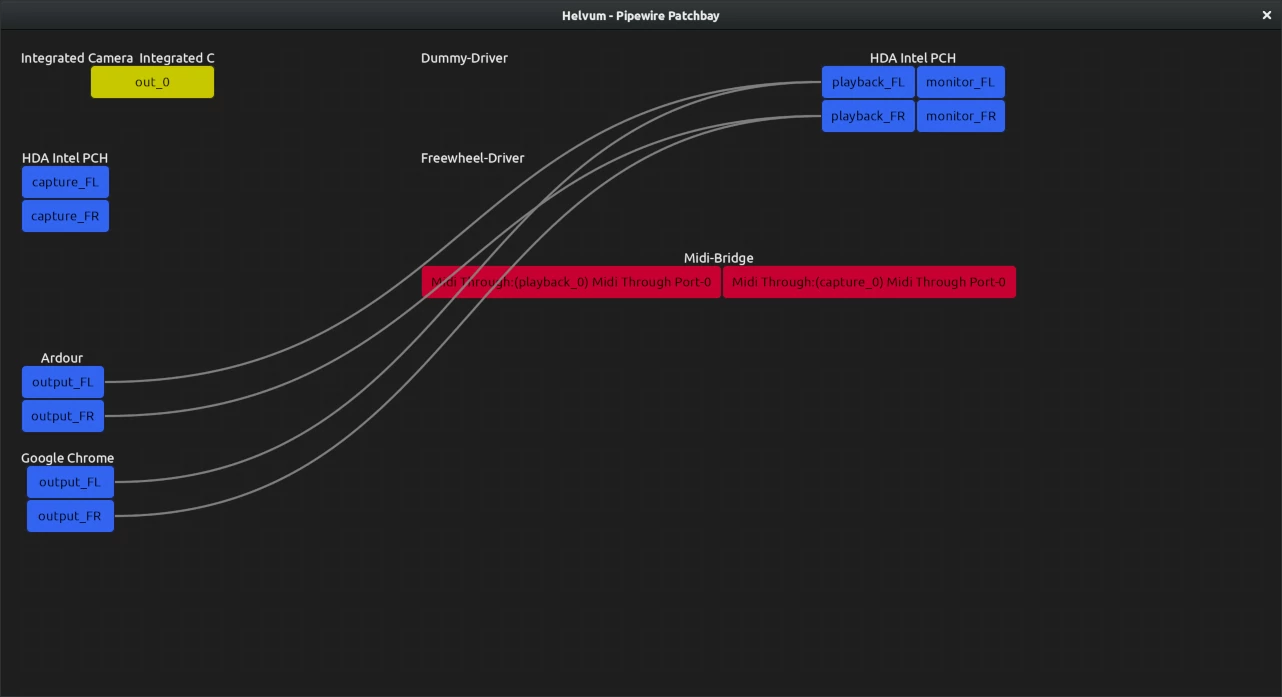
I hear things are not yet just fine in some production scenarios though. But it looks like a major achievement nevertheless, not in the least place because Wim Taymans takes pro audio use cases seriously — something you don’t always get from developers of consumer software for Linux.
VCV Rack 2, Bespoke Synth et al.
Much anticipated VCV Rack 2 was finally released in November with dark room mode, module selections (save, share, edit etc.), enhanced module browser, generally redesigned UI and built-in modules, and much more.
Andrew Belt also released a commercial version of the synth with a VST version and direct user support.
Another huge 2021 release was the first version of Bespoke Synth (by Ryan Challinor), a modular synthesis environment with seemingly endless possibilities.
The OB-Xd project had several nice releases, with HiDPI support (user-defined x1, 1.5, x2 scaling now available), more and better banks, enhanced MIDI learn, and more improvements and fixes.
The Surge team has been really active. First off, there have been two releases of the Surge synth in 2021. I’m not going to bore you with the full list of changes, you can find it here anyway. Some highlights though:
- 4 new oscillator types;
- 8 new filters, with filters now grouped by their function;
- 73 new effects, including 63 Airwindows effects;
- newly introduced Multi-Segment Envelope Generator (MSEG), with up to 128 nodes supported;
- new MIDI controller and scene modulators;
- new and improved skins;
- UX/UI improvements;
- a ton of new patches, wavetables, and presets from 12 musicians.
For 2022, the team is planning to release Surge XT, which is where I should just quote Paul Bacon:
Surge was open sourced in 2018 and had a set of reasonable but distinct architectural choices. We were able to do a lot with that, both getting that version working then adding all the features in 1.7, 1.8 and 1.9. But although Surge was and is great software to work on, we eventually realized we had hit a bit of a brick wall with some of the ways Surge worked (specifically: hand-rolled plugin wrappers and the VSTGUI ui, but other stuff too). So we decided to begin work to port Surge to Juce. This project is “Surge XT”.
Surge XT has a great set of new features already, including a greatly expanded waveshaper section, a formula modulator, great modulation overview tools, an expanded tuning ui, expanded and new FX, and much more. You should give it a whirl! Since it installs with a different plugin ID and different resource directories, you can safely run it side by side with Surge 1.9.
And since unfa is pretty much on top of all libre synth news, here’s a recent stream showing off new stuff in Surge XT:
That’s not the only project by Surge though. Monique monophonic synth by Thomas Arndt is now available on GitHub. You can get a recent nightly build of it on GitHub.
After the initial source code release of Odin2 in 2020, Frederik Siepe took some time to do a major code cleanup and introduce a few new features in 2021:
- new reverb FX based on zita-rev1;
- newly introduced microtuning functionality based on the tuning library created by, well, Surge developers again;
- factory presets have been moved to the binary file.
Overall, development of the synth wasn’t very active but it’s hard to not appreciate all the work put by Frederik into the project prior to that. It’s a truly remarkable piece of software.
Also, it’s interesting that Surge and Odin2 devs exchange code between their projects. Surge devs also pulled some good ideas from OB-Xd.
But there’s a larger observation. Not too long ago, a blind butcher’s hand would be quite enough to count all decent libre synths. And as you were routing their signal via JACK over and over (and over) again — because most of them were standalone-only — you’d be questioning your choice of Linux as a viable musician’s desktop system. I can’t say we are there yet, but at least I don’t feel sorry for myself anymore.
I guess the next big challenge for the community will be producing high-quality libre sample libraries, possibly thanks to HISE. It’s a helluva expensive process (the studio recording/processing step, at least), but it’s got to start somewhere. Maybe we need to pitch in for David Healey, either for his instruments or for his tutorials?
Ardour 6.9 and work towards Ardour 7
After a few “last goodbye tours”, the Ardour team made an actual final 6.x release. Overall, in 2021, you got:
- new Recorder tab with UI streamlined for multitrack recording and ports management;
- exporting-time normalization presets for streaming services such as YouTube and Spotify;
- various improvements in the Loudness and Normalization assistant;
- plugin manager;
- vastly improved shuttle control.
The team then got seriously busy hacking on what will become Ardour 7. Initially, Paul Davis had doubts whether rewriting the internal clock (e.g. to fix rounding errors when working with MIDI) would be sufficient to call it a brand new release. So Paul, Robin, and the Mixbus team ended up working on clip launching for live performance. You probably watched this video a while ago:
Things got much further than that in terms of both features and user interface in the past two months. There’s a dedicated Trigger page now, and it looks a lot like what you can find in Ableton Live et al.:
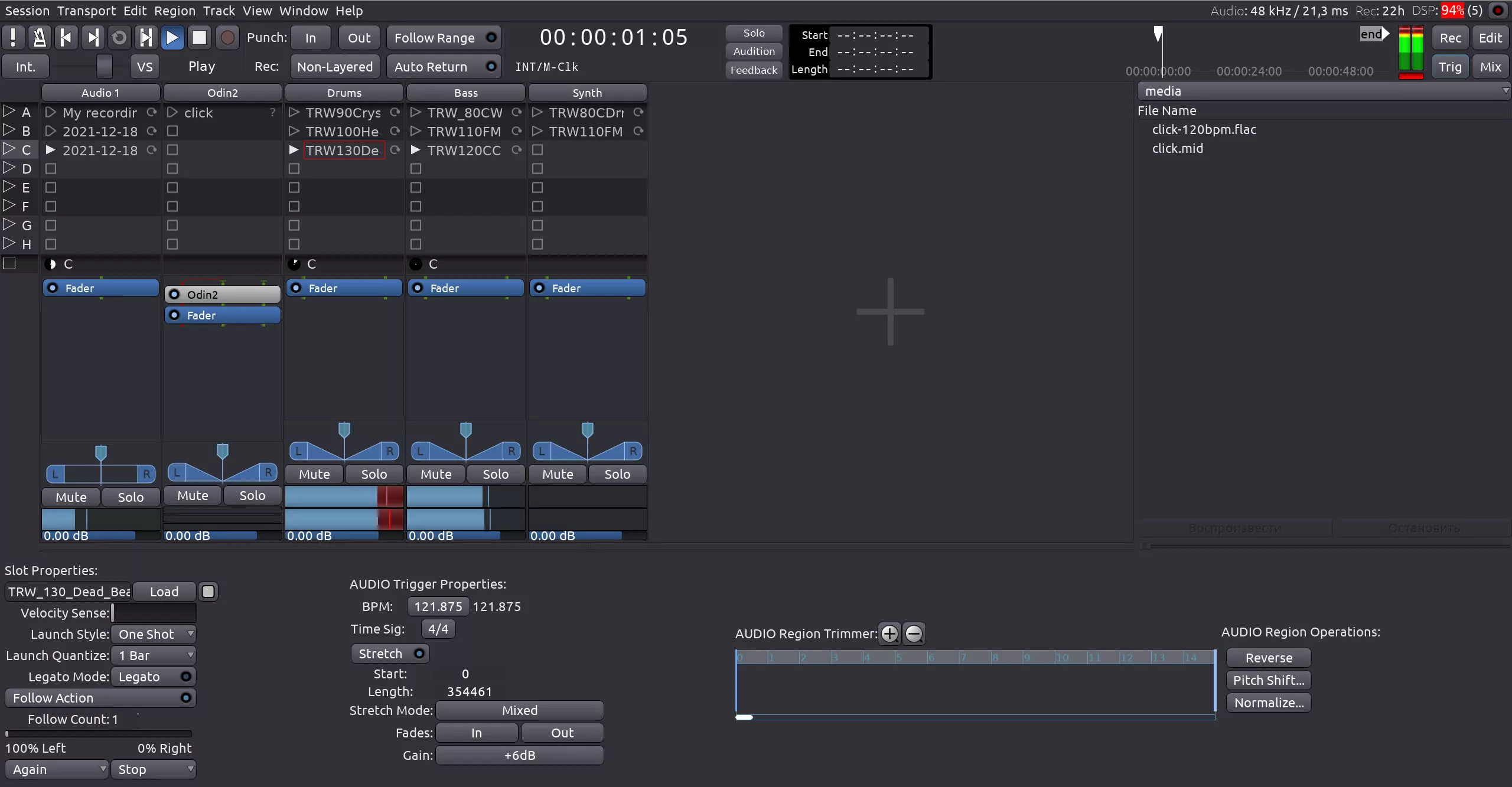
Technically, clips can already be either audio or MIDI, you can launch a scene playback etc. But there’s a lot more to do before this can be called a release. And I’d be a fool to say that this is the final design, there’s much more to follow. However, by the look of it, v7 in 2022 is a possibility. Actually, I asked Paul just that, and his response was:
v7 in 2022 is much much more than a possibility, it’s a guarantee.
There will be more features in version 7. I’m particularly excited about the new Ripple All mode that works across multiple tracks and shifts markers accordingly. Imagine cutting all the ‘ums’ and ‘ers’ and long pauses from a track in a multitrack podcast record. Then imagine not having to realign all tracks. That’s the ticket.
Finally, if you know what’s good for you (a lot of sleep, regular exercise… JK!), please don’t use unstable builds for production just yet. It’s entirely possible you won’t be able to load your “unstable” sessions as work on v7 continues.
Zrythm progress
There has been a crazy amount of hacking on Zrythm in 2021. This is a very compressed list of changes:
- GTK4 port;
- native PulseAudio backend;
- many more actions can be undone/redone;
- various UI customization options in Preferences;
- A bunch of new options for audio content: output gain control on audio tracks, editable fade in/out, adding gain to audio region, BPM detection (via VAMP) etc.
- Automatable track sends
- Folder tracks
- Bar and beat snapping options
- Channel listening and mute/listen/dim knobs in the monitor section
- Various DSP/UI optimizations
- MIDI learn support in more places
- Metronome count-in and recording preroll
- Automatic bug reporting option and an opt-in update checker
- Optional dithering on exporting
- Lots of user manual updates
I think I understand why Zrythm is getting the attention. There is some choice if you want a free/libre DAW or MIDI sequencer. But until Zrythm that choice wasn’t fun:
- You have Ardour which is great but also not really finetuned for production of electronic music. And some of the design choices that Paul made, like the way you edit MIDI data, don’t sit well with part of the user base.
- You have Qtractor but its progress has been stalling for years. I never thought I would say this, but Qtractor is a lot like Rosegarden now: great basic feature set, some advanced stuff, regular releases with minor changes, no great big changes in years.
- You have LMMS but as of any released version, no audio recording.
- MusE sequencer gets big updates every once in a while but I haven’t really seen it in use much.
So far, everyone’s main problem with Zrythm appears to be its tendency to crash at any given minute. Well, you just don’t get this amount of new stuff made by a single developer in this small time frame without a crapton of issues. So I’m guessing Alex will spend a considerable amount of time this year to stabilize the program for v1.0 release later this year or maybe next year.
In his own words, the plan is to implement all remaining features marked as “beta” in the tracker and then make a beta release where the project format will stabilize. Then he’ll mostly focus on bug fixes until v1.0.
In my never-an-humble opinion, Zrythm makes being a musician on Linux more exciting, even at this relatively early development stage. The downside of that for the platform as a whole, of course, is that it’s more options, and quite a few people out there find that confusing.
Inside my head, it’s like this:
- Zrythm is a more of a traditional sequencer with extra features making it great for contemporary electronic music.
- LMMS is more of an FL Studio approach, good for people who don’t need audio much or who are fine adding vocals, guitars, and stuff in another program (for some reason).
- Ardour is full-blown DAW for use in studios however big or small, for any massive editing, and for some live scenarios.
- Audacity is currently for people who do simple cutting and mixing (e.g. podcasts) or don’t mind a multitrack UI for single-track audio editing.
- Everything else is not my problem 🙂
Anyway, that’s how I make my peace with the available libre options. Speaking of which…
Audacity beyond controversies
I really do hope that this is the last time I have to talk about this.
Some time in 2020, Ultimate Guitar / MuseScore approached project founders Dominic Mazzoni and Roger Dannenberg, as well as the current team of developers with an acquisition proposal.
Collectively, the original team owned the Audacity trademark (registered by Dominic years ago in the light of various eBay scams), the audacityteam.org domain name, the actual website, and other assets. The team as well as past and present contributors received an unknown compensation, signed a contributor license agreement, and thus Muse Group gained control over the assets as well as non-exclusive rights to licensing and sublicensing source code.
There have been three major Audacity controversies in the course of ca. 2 months, between early May and early July, almost right after the acquisition announcement:
- Unmerged and abandoned pull request adding telemetry support via Google Analytics and Yandex Metrika. There was no public discussion, it just showed up one day, so this caused an uproar, and Muse Group subsequently abandoned the idea but introduced two other features that required a network stack, more on that below.
- Contributor license agreement (CLA), giving Muse Group non-exclusive rights to relicense the code to make proprietary builds of Audacity. Since June 2021, every new contributor has to sign this. This has a lot to do with Apple’s ToS for iOS that other projects appear to be able to circumvent, but it also might or might not be related to Muse Group’s public plans to introduce some sort of 3rd party cloud services support. So far, Muse Group has been working on the opposite thing: they got permission from most relevant contributors to add “…and later” where the GPLv2-only license was mentioned. Their reasoning for that is being able to relicense binaries of Audacity under GPLv3+ and thus make upcoming VST3 support all legal and dandy.
- Privacy policy. This document silently turned up on audacityteam.org in early July and contained some surprising clauses like requiring users to be at least 13 years old (related to GDPR and COPPA) or announcing that personal data of users could be transferred to authorities on request. I extensively covered this part in a write-up back when this was a hot topic, so basically all I need to say here is that Muse Group listened to the feedback, adjusted how they process IP addresses, and amended the policy by removing offending clauses. The policy in its first iteration couldn’t even apply to any actually released version of Audacity, because it was published before any version of Audacity with network features was released — contrary to some posts you might have read.
Today, Audacity has:
- An opt-out update checker that notifies users about a newly released version and lists changes. By querying the server, Audacity transmits IP address and user agent data (name of the program, version, operating system). Muse Group claim they remove the last octet in the IP address and store all the info no longer than a year (which suggests they also store the time of access), that gives them a general idea where in the world (on a country level) their users are, which versions of Audacity they use etc. Really basic stuff to prioritize things like fixing bugs for this or that platform or upgrading to a new version of C++ based on how many users are left on a particular version of an operating system (their own example of the use for stats).
- A crash reporter which collects basic data about a computer (CPU architecture, operating system and its version, version of Audacity), generates a backtrace, and — strictly per user’s request — transmits it to Sentry. All file paths that can show up in the backtrace (which happens a lot) are replaced with ***** for safety.
When you build Audacity from source code yourself, both network features are disabled by default. You have to specifically enable them. Even so, some distributions appear to refuse to package releases of Audacity past v3.0.2.
There have been at least 20 new contributors (who all signed the CLA) since the latest Audacity controversy, there have been multiple releases with fixes and new features. Yet to this day, people keep releasing videos where they claim Audacity is dead, the community forks are the future etc. The reality is that there have been four major forks:
- Tenacity. They pretty much gave up publicly citing severe burnout. Additionally, one of the maintainers is attempting to write a whole new DJ application in Rust (until recently, he was one of TOP5 Mixxx contributors), which does not help things along.
- Sneedacity. Didn’t do much beyond rebranding, haven’t done anything in the public repository for almost two months.
- Audacium. The only fork that produced a release (and only for Windows x64). It is somewhat active.
- AudMonkey. Attempted to create a Qt port, has been inactive for three months now.
In a moment of brutal honesty, the person behind Tenacity’s Twitter account publicly named spite the only (?) motivation source for the fork. I absolutely support the freedom to fork, but I also have zero trust in longevity of this kind of motivation. So I guess my gut feeling wasn’t too far off this time.
Now, these have been a frustrating few pages to write for a variety of reasons. What’s actually going on with Audacity’s development is pretty awesome. There have been multiple new releases with minor new features and UX/UI improvements.
Actually, scratch that. Non-destructive trimming could be considered a major new feature because it lands Audacity right into the DAW domain, and upcoming non-destructive effects support will be the second anchor to keep Audacity there. That said, product owner Martin Keary doesn’t see Audacity competing against the likes of Ardour, however much feature creep we’ll have to witness. If you need analogies, I guess you could think of Audacity as some sort of GarageBand as compared to Logic Pro. Or screw analogies and just use Audacity however you like.
I don’t have the timeline for you, all I know is that both real-time FX and the spectral brush (one of two GSoC projects in 2021) are being actively worked on.
Audacity’s new spectral editing brush (beta).
Notice the option that allow you to isolate overtones. pic.twitter.com/1KGKqiD7ty
— Tantacrul (@Tantacrul) October 4, 2021
Judging by the Careers page, the Audacity team is also planning to rewrite program’s UI in QML. In fact, in 2021, two developers spent a substantial amount of time devendoring 3rd party libraries to reduce the baggage in the source code tree and then introduce more library/UI separation to rearchitect Audacity and make it toolkit-neutral.
MuseScore 4 is coming too
Meanwhile, fellow MuseScore team (also led by Martin) had to postpone composition features they previously announced to focus on delivering a rock-solid new release with a ton of usability and engraving improvements. Which should happen some time in Q1 2022 according to the roadmap.
I’ve been looking at nightly releases for the past half a year or so. There’s a lot of great stuff going on there, certain changes are definitely workflow boosters. There are glitches here and there, upcoming v4 is not even at public beta stage yet.
I’m particularly interested in how the pluggable closed-source rendering engine will perform because Muse Group also owns StaffPad which has a spectacular live sample-based playback engine. This is expected in version 4 as well. You should also be able to use any VST3 plugin.
The MuseScore team is also in touch with the MIDI 2.0 committee to make sure that the standard has what it takes to make a great MIDI-based playback engine for orchestral music.
What’s up with our legacy
There have been two projects (that I’m tracking) where core (or sole) developers passed away about a year ago.
- Cinelerra GG: the project is now managed by Phyllis Smith, widow of Bill Morrow. There have been multiple releases with smaller improvements and fixes. The project is alive but seriusly needs active developers.
- sK1: Igor’s elder son Albert now has control over the repository, and former contributor Maxim Barabash returned to hack on the project for a while and review pull requests. It’s unclear what’s next for sK1. Originally, Igor had plans to turn sK1 into an online editor like Gravit — at least that’s what Albert told me. These plans were never materialized, and Albert currently has little knowledge on the matter to lead the project.
To that one person who actually read all of the above without skipping parts in self-defense, you are my hero! 🙂 Between testing software, reporting bugs, talking to developers and even filing an animated usability fix proposal, this post took ca. 27 hours to write.
If you appreciate the kind of work I do, you can subscribe on Patreon or make a one-time donation to help me spend less time on paid projects and more time on Libre Arts.
Featured artwork was created by Sad Tea with Krita.

